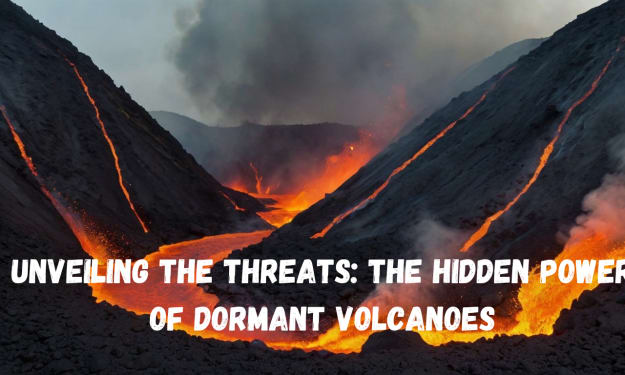The Mariana Trench and Its Extreme Life Forms
Exploring the Abyss

The deep sea is a world of extremes, where life has adapted to the cold, dark depths in remarkable ways. In this series, we’ve explored the ecosystems of this unforgiving realm and seen how communities of life cling to any available energy source, from vents of superheated water to the carrion of sunken whales. Now, it's time to dive even deeper and discover a place where life is pushed to its absolute limits: the Mariana Trench.
The infamous Mariana Trench sits like a crescent-shaped dent in the floor of the Pacific Ocean, a 2,550-kilometer-long, 69-kilometer-wide fracture that plunges into a pure black void. At the bottom, it hosts the deepest known location on Earth, the Challenger Deep, 11,033 meters (36,200 feet) beneath the waves. This trench is part of a global network of deep scars formed by subduction, where tectonic plates collide and one is thrust beneath another, creating these profound oceanic trenches. The western edge of the Pacific Plate subducts beneath the smaller Mariana Plate, leading to the formation of the trench and the nearby Mariana Islands through volcanic activity.
At its deepest point, the Mariana Trench dips into the hadal zone, a little-explored realm named after Hades, the Greek underworld. This is a fitting title for a place characterized by pure darkness, acidic and freezing water, scarce food, and immense pressure, creating a challenging environment for life. For much of history, the hadal zone was believed to be a dead zone, void of any life. An impossible frontier.
However, this perception changed in the 19th century. The depths of the Mariana Trench were first plumbed in 1875 when the crew aboard the HMS Challenger cast a weighted sounding line and found they needed more rope, revealing an unexpectedly deep location. This discovery caught the attention of the ambitious, and in 1960, two men, Jacques Piccard and Navy Lieutenant Don Walsh, set out to reach the bottom in the cramped Trieste bathyscaphe submersible. Their five-hour descent faced immense pressure, nearly a thousand times greater than at sea level, which caused the viewing window to crack, limiting their time on the seafloor to only 20 minutes.
Even in such a short time, they made a shocking discovery: life. Pale shrimp and flounder-like fish were observed, along with a dark brown diatomaceous ooze covering the seafloor. Piccard described this moment with excitement in his book about the voyage, confirming that life could exist in the greatest depths of the ocean.
In 2012, filmmaker James Cameron followed in the Trieste's footsteps aboard the Deepsea Challenger. He also witnessed sprawling microbial mats and bizarre filamentous clumps of microorganisms living off chemicals from altered rocks at a depth of 10,912 meters (35,803 feet). These bacteria support more complex creatures by undergoing chemosynthesis, the deep-sea equivalent of photosynthesis, providing an energy source in the sunless world.
In 1996, the unmanned Japanese submersible Kaiko reached a depth of 10,897 meters, sampling bacteria from the mats observed by Piccard and Walsh. They found many bacterial species that thrived under high environmental pressures, challenging the notion that life could only exist in moderate conditions. In 1998, Kaiko discovered Hirondellea gigas, a gigantic amphipod species, despite the extreme pressures that typically dissolve the calcium carbonate in amphipod shells. These amphipods protect their shells using aluminum armor, extracting aluminum ions from the seafloor mud.
In more recent times, remote submersibles have recorded other oddities of the Mariana Trench. Among the most abundant inhabitants are holothurians, sea cucumbers like the remarkable sea pig, which sifts through mud with its ring of feeding tentacles. The deepest known fish, the Mariana snailfish, thrives at depths of 8,000 meters (26,200 feet), yet fish are thought to be unable to survive where pressure dissolves bones.
Gigantic xenophyophores, single-celled organisms growing up to 20 centimeters in diameter, predatory tunicates called sea squirts, and bioluminescent deep-sea hatchetfish are among the otherworldly organisms glimpsed in the trench. Despite these discoveries, we have only begun to explore the Mariana Trench's hidden world. Many new species likely await discovery, offering insights into how animals survive such extremities and potentially leading to breakthroughs in biomedicine and biotechnology.
However, even these depths are within reach of human-driven destruction. Plastic has already been found in this scarcely understood place, raising concerns about the potential loss of vital discoveries before their importance is understood. As we continue to explore the Mariana Trench, it is crucial to protect this extreme environment and the unique life forms it harbors.
About the Creator
Dilesmeyyy<3
i just like to read






Comments
There are no comments for this story
Be the first to respond and start the conversation.